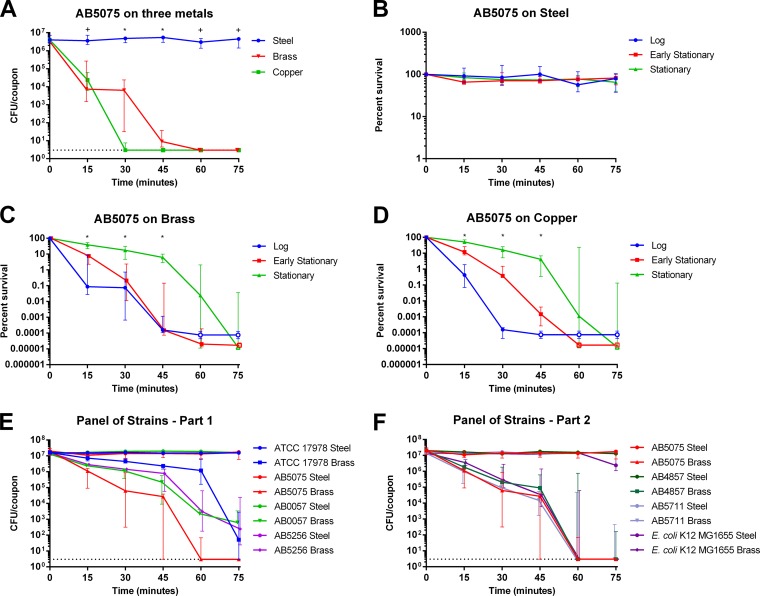FIG 2.
Survival of A. baumannii isolates on metal surfaces. (A) Log-phase (2.5 h) bacterial cultures of AB5075 were spotted onto stainless steel 304, copper 110 H02 (99.9% copper), and cartridge brass C260 (∼70% copper) coupons. Bacteria were recovered after the indicated times and plated for enumeration of surviving CFU. The data are presented as numbers of CFU per coupon for five biologically independent experiments; medians and interquartile ranges are shown. The dashed line indicates the limit of detection (3 CFU/coupon). At each time point, numbers of CFU per milliliter were compared among all three metals by the Kruskal-Wallis test with Dunn's correction for multiple comparisons. The symbols indicate statistically significant comparisons (P < 0.05), as follows: +, brass and copper different from steel; and *, copper different from steel. (B to D) Similar to the experiments in panel A, droplets of AB5075 were spotted onto steel, brass, and copper coupons. Bacteria were taken from log-phase (2.5 h), early-stationary-phase (6 h), and stationary-phase (24 h) cultures. Due to differences in the concentration of cells over the time course, data are presented as percent survival compared to that of the inoculum; open symbols indicate values at or below the limit of detection for all replicates. Data represent five biologically independent experiments; medians and interquartile ranges are shown. *, log- and stationary-phase cultures were significantly different from each other (P < 0.05) at the indicated time point. (E and F) Early-stationary-phase (6 h) cultures of each indicated strain were spotted onto steel and brass coupons. The results for the panel of strains were separated into two graphs for clarity, with AB5075 shown in both panels for comparison. The data are presented as numbers of CFU per coupon for 3 to 5 biologically independent experiments; medians and ranges are shown.

